Space
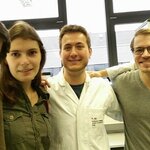
Mars is a very harsh and hostile environment for future human explorers and like any other known planet it has no breathable air.
That could change someday, and it may be soon enough for our generation to witness it, as the student team from Germany has a bold vision to make a first step to terraform the Red Planet, turning it more Earth-like.
The plan is to send cyanobacteria to Mars to generate oxygen out of carbon dioxide which is the main component of Martian atmosphere (nearly 96%). “Cyanobacteria do live in conditions on Earth where no life would be expected. You find them everywhere…

The Government Accountability Office (GAO) is the audit, evaluation, and investigative arm of Congress, which exists to support Congress in meeting its constitutional responsibilities and to help improve the performance and accountability of the federal government. On Dec. 10 the Space Subcommittee of the House Science, Space and Technology Committee held a hearing on the progress of the nation’s next generation deep space exploration vehicle and heavy lift rocket. GAO Director of Acquisition and Sourcing Management Christina Chaplain testified on the progress of the Space Launch System (SLS…

Auroras are the most visible manifestation of the sun's effect on Earth, but many aspects of these spectacular displays are still poorly understood.
One particular type of very high-latitude aurora is known as a theta aurora -- seen from above it looks like the Greek letter theta, an oval with a line crossing through the center -- which sometimes occurs closer to the poles than normal aurora. While the genesis of the auroral oval emissions is reasonably well understood, the origin of the theta aurora has been undetermined.
A paper in Science combined data from the joint European Space Agency…
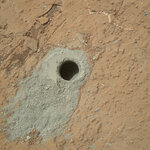
In 2009, researchers detected methane on Mars, suggesting the planet may be biologically or geologically active.
Now NASA's Mars Curiosity rover has measured a tenfold spike in methane in the atmosphere around it and detected other organic molecules in a rock-powder sample collected by the robotic laboratory's drill.
Researchers used Curiosity's onboard Sample Analysis at Mars (SAM) laboratory a dozen times in a 20-month period to sniff methane in the atmosphere. During two of those months, in late 2013 and early 2014, four measurements averaged seven parts per billion. Before and…
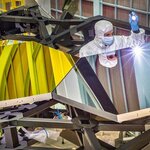
With just under 4 years until its planned launch in October 2018, the James Webb Space Telescope (JWST) project reports it remains on schedule and budget. However, technical challenges with JWST elements and major subsystems, have diminished the project's overall schedule reserve and increased risk, says a new report released by the Government Accountability Office (GAO).
"During the past year, delays have occurred on every element and major subsystem schedule—especially with the cryocooler—leaving all at risk of negatively impacting the overall project schedule reserve if further…

"Watch therefore, for ye know not the day nor the hour," could be still an actual description of our ability to predict asteroid threats to Earth. The sentence from the Bible (Matthew 25:13) sound like a reminder of a vast number of more than 1,500 currently potentially hazardous objects, floating in space, meandering around in the Solar System. Some of them may be destined to pay our planet a close visit someday, unexpectedly, Chelyabinsk-style, as the one that hit Russia in February 2013, causing serious damages and injuring about 1,500 people. Who would have predicted that? Lately, one…

Researchers from Imperial College London and the University of Barcelona have used data from astronomical surveys to measure a standard distance that is central to our understanding of the expansion of the universe, a much more accurate method than calculations related to general relativity.
The new study is the first to measure it using observed data. A standard ruler is an object which consistently has the same physical size so that a comparison of its actual size to its size in the sky will provide a measurement of its distance to earth. Previously the size of this standard…

Titan is Saturn's largest moon and the only planetary body outside Venus, Earth and Mars to have fields of wind-blown dunes on its surface.
Saturn and Titan orbit about ten times farther from the sun than Earth. Scientists got their first detailed information about Titan when the Cassini/Huygens orbiter and lander arrived in 2004. The short-lived Huygens lander took photos when it reached the surface and as it was descending through Titan's dense, smoggy atmosphere, which has 1.4 times greater pressure than Earth's. Those images, plus studies using instruments on the Cassini orbiter, revealed…
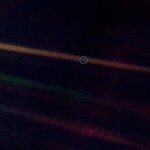
Undiscovered Worlds and Pale Blue Dots
May 9th 2015 will see the inauguration of Cornell University's new Institute for Pale Blue Dots. Details here.
The first image of a "pale blue dot" was sent back by Voyager 1. The "dot" is a single pixel.
"all of human history has happened on that tiny pixel, which is our only home" Carl Sagan, speech at Cornell University, October 13th 1994
Image courtesy Wikipedia.
Although the Dotties Institute is yet to be inaugurated the web site already has some extremely interesting materials. The latest, posted December 4th 2014 is entitled: How…
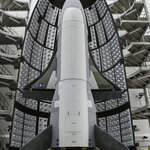
Why does the new space craft look like a capsule? The simple fact is that between a capsule and a space plane like the shuttle, a capsule is the better vehicle for a direct return trip from interplanetary space to Earths surface. People my age, early-mid 30's, and younger look at a space capsule as being an artifact from a past era. The 1960's and 1970's were the age of the capsule. Then in the 1980's and 1990's we had the Space Shuttle Program in full swing. The shuttle was so much more than a spacecraft. As president Reagan put it the Shuttle was a symbol…